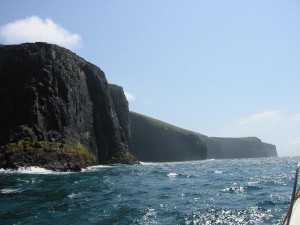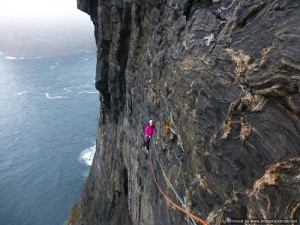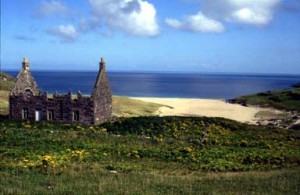Lovegrove explains that this Mingulay Boat song has nothing particularly to do with Mingulay. But this island captures the tenuous relationship between humans and nature.
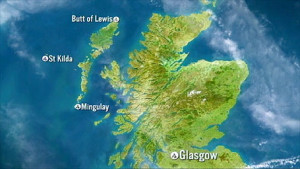 Out at the end of the Outer Hebrides Islands, Mingulay reveals the abundance of wild nature and the tenacity of the human spirit. Humans have struggled to live on this island for the past 5000 years, only recently abandoning the harsh life of fighting to survive. Celtic monks lived here for the solitude, quiet, and escape from human folly. Most likely the Vikings took them out, as was their wont as they sailed around the coast of England, Scotland, and Ireland, pillaging these communities, burning manuscripts and monasteries, slaughtering monks.
Out at the end of the Outer Hebrides Islands, Mingulay reveals the abundance of wild nature and the tenacity of the human spirit. Humans have struggled to live on this island for the past 5000 years, only recently abandoning the harsh life of fighting to survive. Celtic monks lived here for the solitude, quiet, and escape from human folly. Most likely the Vikings took them out, as was their wont as they sailed around the coast of England, Scotland, and Ireland, pillaging these communities, burning manuscripts and monasteries, slaughtering monks.
In the 17th-19th centuries, a small group of hardy villages eked out an existence by eating 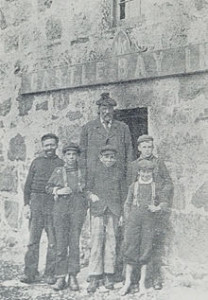 the plentiful birds and selling their feathers. The trick was getting to them as they nested high up soaring cliffs. As life simply became intolerable, they gradually moved away to other, more kindly islands, leaving Mingulay to the birds in 1912.
the plentiful birds and selling their feathers. The trick was getting to them as they nested high up soaring cliffs. As life simply became intolerable, they gradually moved away to other, more kindly islands, leaving Mingulay to the birds in 1912.

